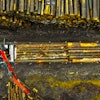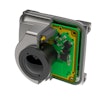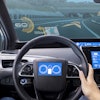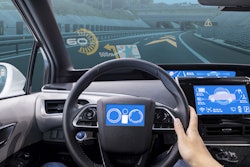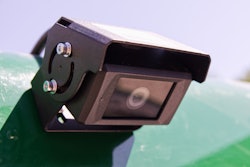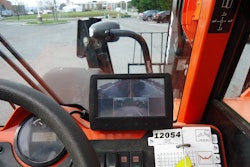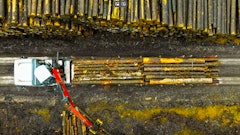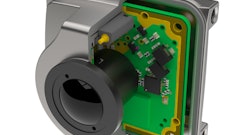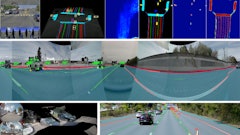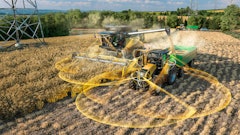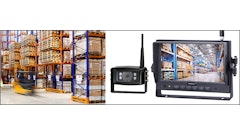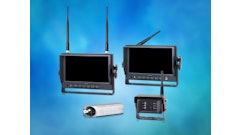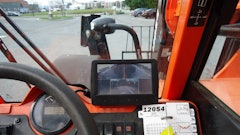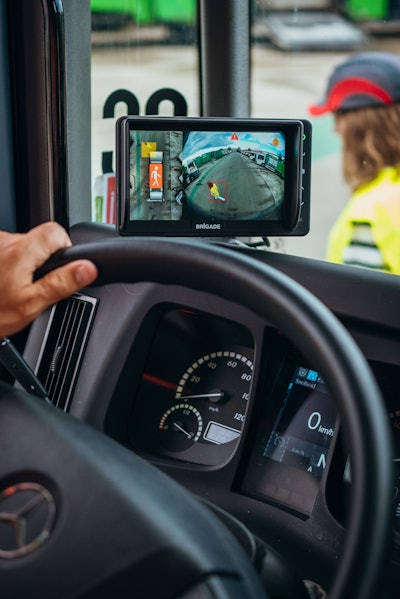
There’s been a lot of interest and confusion between artificial intelligence (AI) and advanced driver assistance systems (ADAS) within the off-highway industry, and how they have evolved and work together.
To start with, it’s important to understand the differences between ADAS and AI. At the most basic level, ADAS is offered for various purposes from creating a warning system to taking control of the vehicle. For example, a collision warning system that alerts the driver, but does not take control of the vehicle would be consider L0 ADAS, while a forward collision warning that applies the brakes when an object is detected could be L2 to L4 ADAS, depending on the integration. In contrast, AI utilizes machine learning or programming to receive more information about the surroundings or situation prior to providing alerts or haptic responses in the vehicle.
“ADAS has been around for a long time,” said Corey Heniser, CEO of Brigade Electronics. “It’s a practical technology because it’s very specific about what it’s looking for and it’s continually developing. AI cameras have been a subset of ADAS, but now we’re seeing their potential and they are becoming a whole new field of their own. Until very recently, the reliability of detection on AI cameras has not been as good as we would like it to be. There were too many false positives as well as false negatives, but we’re now getting to the stage where AI can make a huge difference to vehicle safety.”
Henry Morgan, sales development manager for Brigade, acknowledged there are still issues to be addressed. For example, standard AI cameras need lights to function. In off-road and outdoor settings this can be problematic, with poor visibility, mud or clouds of dust. Very bright or low light conditions and bad weather such as fog, snow or heavy rain can also obstruct camera views, particularly with standard cameras.
However, reduced latency and better pricing are helping to increase the number of AI applications. Morgan recognized that research and development is now based on the premise that if there’s a risk, how can AI be used to reduce it? New applications are being worked on all the time.
AI, ADAS technology are improving
AI cameras are becoming much better, faster, sharper by using algorithms to work out what they do with the information they receive to deliver a safe and beneficial outcome and constantly learning from each experience.
“I always get concerned when people focus directly on the technology rather than looking initially at the problem they are trying to solve,” Morgan said. “This often means that they have a preconceived idea about what the technology can and can’t do. Whereas the only real way to use technology to address problems is to work out a very carefully defined risk storyboard. Here’s the risk. Here’s a situation where it happens. Here's what’s needed to remove the risk and defuse the situation. Let’s make it.”
Heniser provided an example of a maintenance engineer working at a quarry who wants to speak to the driver of a large excavator. They attract the driver’s attention and get out of their own vehicle. At this point they may be temporarily out of the driver’s sight and the driver isn’t sure if they’re heading to the front or to the access ladder to get on board. An ADAS camera will spot the engineer and alert the driver, but one embedded with AI will learn an approaching person is likely to be heading for the access ladder, and if the access ladder is lowered, the excavator will be immobilized.
A basic ADAS camera will alert the driver to an obstacle, but this could be scaffolding or a pallet of bricks. Add AI into the mix and the driver can differentiate between a vulnerable site worker and a pile of concrete blocks and act accordingly — the concrete blocks will stay where they are, the human could veer off to the left or right.
Each risk must be examined to see what the technology can do to alleviate it. Each vehicle, industry and work site can have different risks. If there is a specific problem to be addressed, such as a dump truck driver on uneven terrain or a sharp gradient which might obscure an approaching worker, a particular workaround can be built into an AI solution.
“When it comes down to it, though,” Heniser said, “it’s still the driver who must react when alerted. You still need training, the driver knowing they are still in charge, backed up by the right systems.”
CAN-based radar as an alert system to detect moving objects and automatic braking if connected are examples where ADAS has traditionally worked well. For dashcams, however, AI cameras are fast becoming an essential component.
As a comparison, Brigade’s Backsense Radar Obstacle Detection, which is an ADAS product, detects people and objects in blind spots, which can be particularly large on off-road construction vehicles, and provides the driver with in-cab visual and audible warnings.
On the other hand, Radar Predict uses AI technology to analyze data such as the speed and direction of a person, and its self-learning mode detects, for example, whether a digger is fitted with a trailer and, if so, prevents time-wasting false alerts.
 Brigade Electronics
Brigade Electronics
Improving off-road vehicle safety
There are many benefits safety enhancements can bring to off-road vehicles. This includes the increasing sophistication of vehicle telematics, a combination of GPS systems, onboard diagnostics and wireless devices which transmit data and information contributing to the safety of the vehicle and driver.
From spotting obstacles to controlling speed going downhill to preventing vehicles from tipping over on rough ground, the driver is provided with a comprehensive set of information to decide while reducing potential false alarms.
There are more than 1,000 fatal occupational injuries in the US construction industry alone every year, and construction deaths account for 19% of deaths in the US workforce per year. In addition, in 2022 there were 169,600 non-fatal construction injuries and illnesses. 24.2 million working hours were lost as a result.
Working off road is still one of the most dangerous occupations. All site vehicles should be equipped with the most up-to-date safety solutions, whether they are ADAS or AI or, as is becoming more likely, a combination of the two.
